Profile
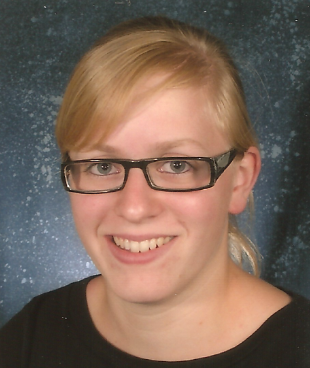
|
Dr. Andrea Schnorr |
Publications
Feature Tracking by Two-Step Optimization

Tracking the temporal evolution of features in time-varying data is a key method in visualization. For typical feature definitions, such as vortices, objects are sparsely distributed over the data domain. In this paper, we present a novel approach for tracking both sparse and space-filling features. While the former comprise only a small fraction of the domain, the latter form a set of objects whose union covers the domain entirely while the individual objects are mutually disjunct. Our approach determines the assignment of features between two successive time-steps by solving two graph optimization problems. It first resolves one-to-one assignments of features by computing a maximum-weight, maximum-cardinality matching on a weighted bi-partite graph. Second, our algorithm detects events by creating a graph of potentially conflicting event explanations and finding a weighted, independent set in it. We demonstrate our method's effectiveness on synthetic and simulation data sets, the former of which enables quantitative evaluation because of the availability of ground-truth information. Here, our method performs on par or better than a well-established reference algorithm. In addition, manual visual inspection by our collaborators confirm the results' plausibility for simulation data.
@ARTICLE{Schnorr2018,
author = {Andrea Schnorr and Dirk N. Helmrich and Dominik Denker and Torsten W. Kuhlen and Bernd Hentschel},
title = {{F}eature {T}racking by {T}wo-{S}tep {O}ptimization},
journal = TVCG,
volume = {preprint available online},
doi = {https://doi.org/10.1109/TVCG.2018.2883630},
year = 2018,
}
Feature Tracking Utilizing a Maximum-Weight Independent Set Problem

Tracking the temporal evolution of features in time-varying data remains a combinatorially challenging problem. A recent method models event detection as a maximum-weight independent set problem on a graph representation of all possible explanations [35]. However, optimally solving this problem is NP-hard in the general case. Following the approach by Schnorr et al., we propose a new algorithm for event detection. Our algorithm exploits the modelspecific structure of the independent set problem. Specifically, we show how to traverse potential explanations in such a way that a greedy assignment provides reliably good results. We demonstrate the effectiveness of our approach on synthetic and simulation data sets, the former of which include ground-truth tracking information which enable a quantitative evaluation. Our results are within 1% of the theoretical optimum and comparable to an approximate solution provided by a state-of-the-art optimization package. At the same time, our algorithm is significantly faster.
@InProceedings{Schnorr2019,
author = {Andrea Schnorr, Dirk Norbert Helmrich, Hank Childs, Torsten Wolfgang Kuhlen, Bernd Hentschel},
title = {{Feature Tracking Utilizing a Maximum-Weight Independent Set Problem}},
booktitle = {9th IEEE Symposium on Large Data Analysis and Visualization},
year = {2019}
}
Poster: Complexity Estimation for Feature Tracking Data.
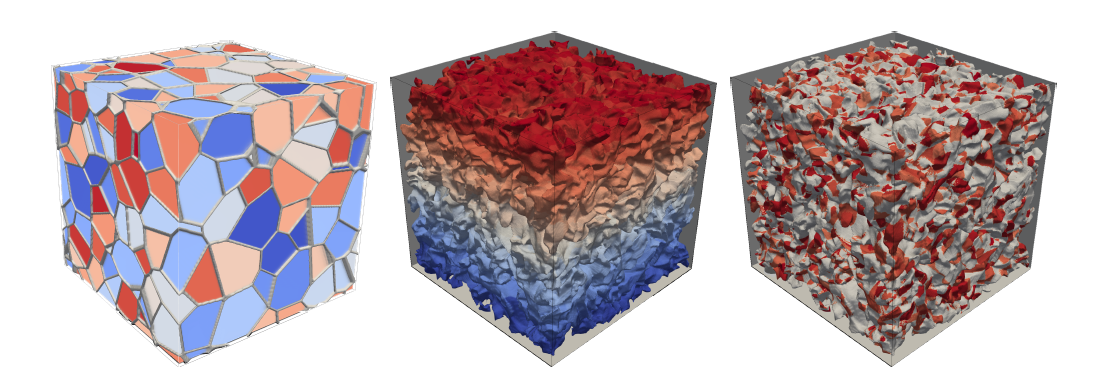
Feature tracking is a method of time-varying data analysis. Due to the complexity of the underlying problem, different feature tracking algorithms have different levels of correctness in certain use cases. However, there is no efficient way to evaluate their performance on simulation data since there is no ground-truth easily obtainable. Synthetic data is a way to ensure a minimum level of correctness, though there are limits to their expressiveness when comparing the results to simulation data. To close this gap, we calculate a synthetic data set and use its results to extract a hypothesis about the algorithm performance that we can apply to simulation data.
@inproceedings{Helmrich2018,
title={Complexity Estimation for Feature Tracking Data.},
author={Helmrich, Dirk N and Schnorr, Andrea and Kuhlen, Torsten W and Hentschel, Bernd},
booktitle={LDAV},
pages={100--101},
year={2018}
}
Interactive Exploration of Dissipation Element Geometry
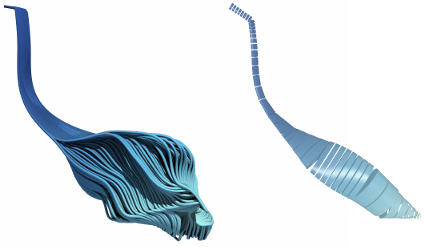
Dissipation elements (DE) define a geometrical structure for the analysis of small-scale turbulence. Existing analyses based on DEs focus on a statistical treatment of large populations of DEs. In this paper, we propose a method for the interactive visualization of the geometrical shape of DE populations. We follow a two-step approach: in a pre-processing step, we approximate individual DEs by tube-like, implicit shapes with elliptical cross sections of varying radii; we then render these approximations by direct ray-casting thereby avoiding the need for costly generation of detailed, explicit geometry for rasterization. Our results demonstrate that the approximation gives a reasonable representation of DE geometries and the rendering performance is suitable for interactive use.
@InProceedings{Vierjahn2017,
booktitle = {Eurographics Symposium on Parallel Graphics and Visualization},
author = {Tom Vierjahn and Andrea Schnorr and Benjamin Weyers and Dominik Denker and Ingo Wald and Christoph Garth and Torsten W. Kuhlen and Bernd Hentschel},
title = {Interactive Exploration of Dissipation Element Geometry},
year = {2017},
pages = {53--62},
ISSN = {1727-348X},
ISBN = {978-3-03868-034-5},
doi = {10.2312/pgv.20171093},
}
Poster: Formal Evaluation Strategies for Feature Tracking
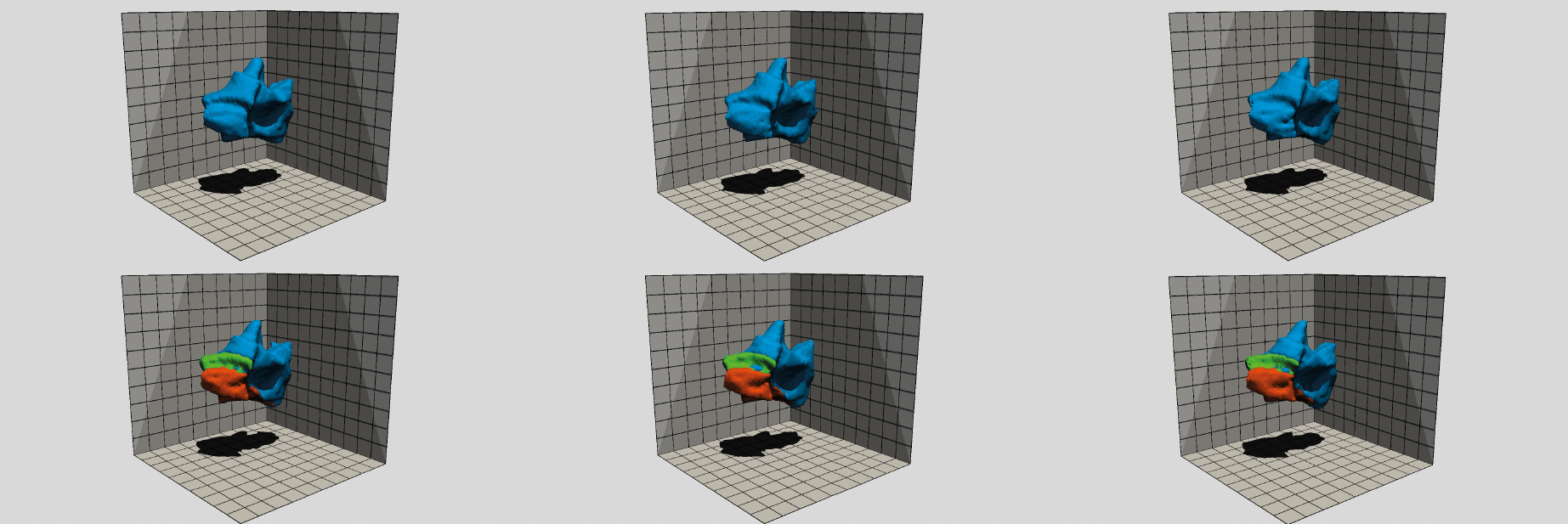
We present an approach for tracking space-filling features based on a two-step algorithm utilizing two graph optimization techniques. First, one-to-one assignments between successive time steps are found by a matching on a weighted, bi-partite graph. Second, events are detected by computing an independent set on potential event explanations. The main objective of this work is investigating options for formal evaluation of complex feature tracking algorithms in the absence of ground truth data.
@INPROCEEDINGS{Schnorr2016, author = {Andrea Schnorr and Sebastian Freitag and Dirk Helmrich and Torsten W. Kuhlen and Bernd Hentschel}, title = {{F}ormal {E}valuation {S}trategies for {F}eature {T}racking}, booktitle = Proc # { the } # LDAV, year = {2016}, pages = {103--104}, abstract = { We present an approach for tracking space-filling features based on a two-step algorithm utilizing two graph optimization techniques. First, one-to-one assignments between successive time steps are found by a matching on a weighted, bi-partite graph. Second, events are detected by computing an independent set on potential event explanations. The main objective of this work is investigating options for formal evaluation of complex feature tracking algorithms in the absence of ground truth data.
}, doi = { 10.1109/LDAV.2016.7874339}}
Poster: Tracking Space-Filling Features by Two-Step Optimization
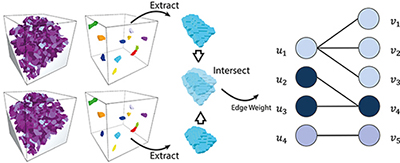
We present a novel approach for tracking space-filling features, i.e., a set of features covering the entire domain. The assignment between successive time steps is determined by a two-step, global optimization scheme. First, a maximum-weight, maximal matching on a bi-partite graph is computed to provide one-to-one assignments between features of successive time steps. Second, events are detected in a subsequent step; here the matching step serves to restrict the exponentially large set of potential solutions. To this end, we compute an independent set on a graph representing conflicting event explanations. The method is evaluated by tracking dissipation elements, a structure definition from turbulent flow analysis.
Honorable Mention Award!
@inproceedings {eurp.20161146,
booktitle = {EuroVis 2016 - Posters},
editor = {Tobias Isenberg and Filip Sadlo},
title = {{Tracking Space-Filling Features by Two-Step Optimization}},
author = {Schnorr, Andrea and Freitag, Sebastian and Kuhlen, Torsten W. and Hentschel, Bernd},
year = {2016},
publisher = {The Eurographics Association},
pages = {77--79},
ISBN = {978-3-03868-015-4},
DOI = {10.2312/eurp.20161146}
}
Packet-Oriented Streamline Tracing on Modern SIMD Architectures
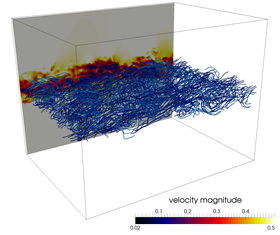
The advection of integral lines is an important computational kernel in vector field visualization. We investigate how this kernel can profit from vector (SIMD) extensions in modern CPUs. As a baseline, we formulate a streamline tracing algorithm that facilitates auto-vectorization by an optimizing compiler. We analyze this algorithm and propose two different optimizations. Our results show that particle tracing does not per se benefit from SIMD computation. Based on a careful analysis of the auto-vectorized code, we propose an optimized data access routine and a re-packing scheme which increases average SIMD efficiency. We evaluate our approach on three different, turbulent flow fields. Our optimized approaches increase integration performance up to 5:6 over our baseline measurement. We conclude with a discussion of current limitations and aspects for future work.
@INPROCEEDINGS{Hentschel2015,
author = {Bernd Hentschel and Jens Henrik G{\"o}bbert and Michael Klemm and
Paul Springer and Andrea Schnorr and Torsten W. Kuhlen},
title = {{P}acket-{O}riented {S}treamline {T}racing on {M}odern {SIMD}
{A}rchitectures},
booktitle = {Proceedings of the Eurographics Symposium on Parallel Graphics
and Visualization},
year = {2015},
pages = {43--52},
abstract = {The advection of integral lines is an important computational
kernel in vector field visualization. We investigate
how this kernel can profit from vector (SIMD) extensions in modern CPUs. As a
baseline, we formulate a streamline
tracing algorithm that facilitates auto-vectorization by an optimizing compiler.
We analyze this algorithm and
propose two different optimizations. Our results show that particle tracing does
not per se benefit from SIMD computation.
Based on a careful analysis of the auto-vectorized code, we propose an optimized
data access routine
and a re-packing scheme which increases average SIMD efficiency. We evaluate our
approach on three different,
turbulent flow fields. Our optimized approaches increase integration performance
up to 5.6x over our baseline
measurement. We conclude with a discussion of current limitations and aspects
for future work.}
}
Poster: Tracking Space-Filling Structures in Turbulent Flows
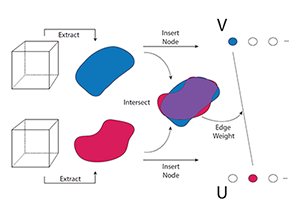
We present a novel approach for tracking space-filling features, i.e. a set of features which covers the entire domain. In contrast to previous work, we determine the assignment between features from successive time steps by computing a globally optimal, maximum-weight, maximal matching on a weighted, bi-partite graph. We demonstrate the method's functionality by tracking dissipation elements (DEs), a space-filling structure definition from turbulent flow analysis. The ability to track DEs over time enables researchers from fluid mechanics to extend their analysis beyond the assessment of static flow fields to time-dependent settings.
@INPROCEEDINGS{Schnorr2015,
author = {Andrea Schnorr and Jens-Henrik Goebbert and Torsten W. Kuhlen and Bernd Hentschel},
title = {{T}racking {S}pace-{F}illing {S}tructures in {T}urbulent {F}lows},
booktitle = Proc # { the } # LDAV,
year = {2015},
pages = {143--144},
abstract = {We present a novel approach for tracking space-filling features, i.e. a set of features which covers the entire domain. In contrast to previous work, we determine the assignment between features from successive time steps by computing a globally optimal, maximum-weight, maximal matching on a weighted, bi-partite graph. We demonstrate the method's functionality by tracking dissipation elements (DEs), a space-filling structure definition from turbulent flow analysis. The abilitytotrack DEs over time enables researchers from fluid mechanics to extend their analysis beyond the assessment of static flow fields to time-dependent settings.},
doi = {10.1109/LDAV.2015.7348089},
keywords = {Feature Tracking, Weighted, Bi-Partite Matching, Flow
Visualization, Dissipation Elements}
}

